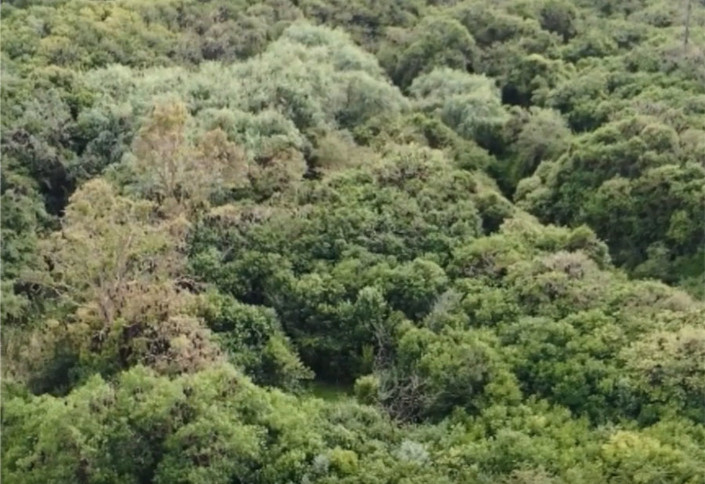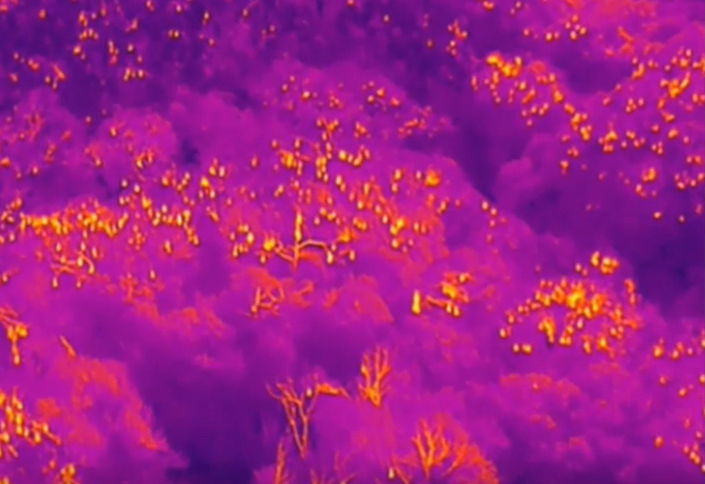A joint effort between the Western Sydney University and the Taronga Conservation Society has come up with the method. A paper about it has been published in the journal Remote Sensing In Ecology and Conservation.
The grey-headed species is known by the scientific name Pteropus poliocephalus. The new method of using drones had been verified to be accurate by comparison with ground counts in single trees to counts obtained from the drone, from repeated drone surveys, and from multiple human counters.
Advanced image detection techniques, including machine-learning and computer vision methods to semi-automate flying-fox counts from the drone-acquired imagery are also being utilised.
|
|

A view of the trees from a drone with a thermal camera turned off. Supplied
"At present there are two main methods for getting accurate counts of a flying-fox colony: during the day, when the flying-foxes are roosting and therefore quite static, or during the evening when they leave the roost to forage on nectar and fruit and can be counted as they depart the roost."
Co-author Dr John Martin, a research scientist at Taronga, said: "However, there are several issues in conducting ground surveys: the terrain can be difficult and physically challenging for counting personnel and their presence can disturb rooting flying-foxes, reducing the accuracy of the estimate.
"Fly-out counts rely on rapidly counting fast-moving animals at dusk, when the light is fading, complicating these assessments."

A view of the same trees with the thermal camera turned on. Supplied
Another co-author, Associate Professor Matthias Boer, said: "We demonstrated that drone-acquired thermal imagery can be used to accurately and precisely quantify the abundance of flying-foxes in a roost, and that semi-automated methods for counting flying-foxes in thermal imagery are comparable to human assessments in their accuracy."
And the remaining author, Associate Professor Justin Welbergen, added: "This method is very valuable for reliably monitoring the abundance of individuals in flying-fox roosts and will aid in the conservation and management of this globally threatened group of flying-mammals, as well as other warm-blooded tree-roosting species."











































